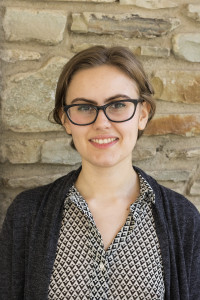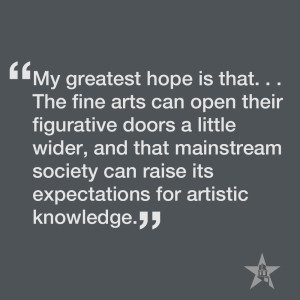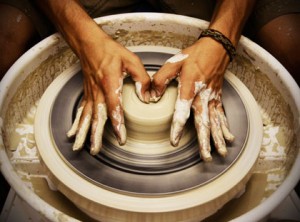I recently moved to New York City, home of some of the greatest art museums in the world. This experience has brought me new insight about how people and art interact. As I checked off some of the most famous collections of my mental wish list, I became aware of some unspoken fault lines, culminating in the Neue Galerie: a small early twentieth century German and Austrian museum in a cozy Beaux-Arts style building, nestled in at a street corner, its mansard roof primly tucked inside its own parameter. Somehow it remains inconspicuous, just outside the bustle of Central Park. Instead of signs or advertisements beckoning eager tourists with twenty dollar bills ready to leap from their pockets in pursuit of an “authentic” New York experience, one finds there only a small gold plaque with the name of the gallery engraved upon it, difficult to read from more than a few feet.
 The plaque outside the Neue serves as an appropriate metaphor for the state of the general current posture towards the fine arts, and, I daresay, the art world’s posture towards its own audience: the invitation is hard to find and no one wants to take the time to look for it. There is an epidemic, a widening chasm between the elite and the layperson. I see two primary reasons for this: the arts demand more and more pedigree, and in return the average person responds by investing less and less in an enterprise that would rather be a secret club than a shared experience. Even when people exert effort to learn, they find little assurance that they are “elite” enough to take a meaningful part.
The plaque outside the Neue serves as an appropriate metaphor for the state of the general current posture towards the fine arts, and, I daresay, the art world’s posture towards its own audience: the invitation is hard to find and no one wants to take the time to look for it. There is an epidemic, a widening chasm between the elite and the layperson. I see two primary reasons for this: the arts demand more and more pedigree, and in return the average person responds by investing less and less in an enterprise that would rather be a secret club than a shared experience. Even when people exert effort to learn, they find little assurance that they are “elite” enough to take a meaningful part.
For example, on one particular visit the rotating exhibit featured Egon Schiele, an Austrian expressionist, whose work was accompanied by an orchestral piece pouring from the overhead speakers. Amidst Schiele’s visual feast, I noticed the steady stream of carefully reverent viewers, trying not to make eye contact, trying to look appropriately disdainful. Counting the seconds, they made sure to look at one piece long enough to appear contemplative, but briefly enough to seem erudite and experienced. There was an overwhelming sense of unease: the subconscious quiver and timid lethargy of people who weren’t sure they should really be there.
 The masses are not free of responsibility, though. The aesthetic pleasure of art is not always its
The masses are not free of responsibility, though. The aesthetic pleasure of art is not always its
primary aim (in fact, the closer one gets to modernity, the less it tends to be). It’s meant to speak to the depths of available emotion, to challenge one’s assumptions, and to suggest a secondary reality or a potential future. But too often, when art becomes even modestly challenging, it’s quickly abandoned as obscure, nonsensical, or simply uninteresting. We’ve spoiled ourselves into a kind of artistic malnutrition, making ourselves sick on an expectation that everything we consume should be immediately easy to understand. Pop singers like Taylor Swift are popular because their music ostensibly makes us feels good, all dopamine with little talent, thoughtfulness or influential thematic content involved. It’s a fallacy to say “I’m just not into art.” Such a thing expresses an acute disinterest in human nature, beauty, and truth, the seminal elements which inspire us to create. Perhaps society’s vision for education has fallen short if a majority are incapable of appreciating or at least of having the vocabulary to discuss the fine arts.
My greatest hope is that both problems can be addressed: that the fine arts can open their figurative doors a little wider, and that mainstream society can raise its expectations for artistic knowledge. After all, art is for people, and people are meant to be ennobled, edified, and even bettered by art. Neither ignorance nor elitism should be allowed to persist, lest these two extremes repel one another in futility ad infinitum.
Hannah is a junior violin performance major with a minor in Spanish.


